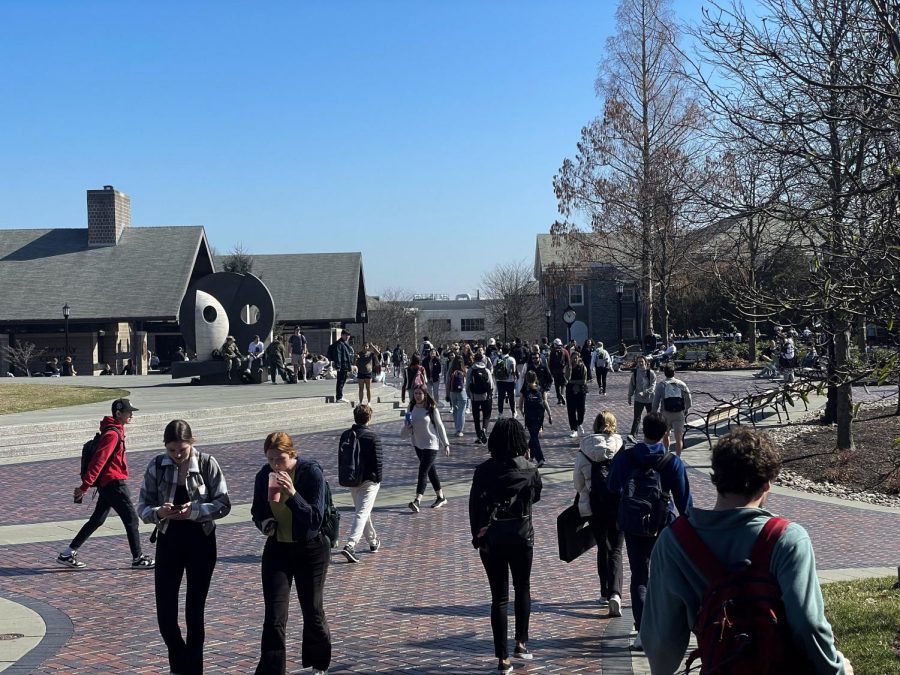What’s up with the Weather, Nova?
Brian Luppy/ Villanovan Photography
Students walking around the Oreo during an unseasonably warm day in February.
March 1, 2023
Students may have noticed the unpredictability of this year’s weather, with some unseasonably warm days mixed into the winter climate. Students certainly took advantage of this on Thursday, February 23 by sporting short sleeves and lounging on the grass all afternoon. Yet, these same students were bundled up by Saturday, February 25, braving the cold and occasional flurry.
An anonymous student commented on the difference in weather this year.
“Winter is going by much faster,” they said, referring to the question on everyone’s mind: “Where is the snow?”
Mia Kotulka, a Villanova freshman and Pennsylvania resident, was also puzzled by this month’s chaotic change in temperature.
“I went on a walk two days ago… and a few days later, there is a threat of snow,” she stated.
The inconsistency of the climate is becoming a frequent inconvenience,
“[I] cannot plan for [the weather] anymore [because] the weather app is always incorrect,” Kotulka said.
These frustrations were shared among those interviewed.
“I was super happy with the warm weather and seeing all of my friends having fun outside, only to have to take out my puffer coat again the next day,” another student said.
So far this February, the average temperature in Villanova, Pennsylvania, has climbed to 42.9 degrees, with the mean minimum temperature sitting at 34.4 degrees and the mean maximum at 51.2 degrees. This is a sizable change considering that the monthly average was 36.6 degrees just five years ago. Precipitation levels have also run relatively low this winter, at an average of 0.12 inches in January and 0.04 inches in February to date.
This issue reaches beyond Villanova, with other parts of the United States also experiencing unstable changes in temperature and climate far from the norm. Philadelphia and the surrounding area recorded record-high averages amidst strikingly little snow in January. States in the west, such as California, Nevada and Utah, have had unusually frigid winters with temperatures roughly 10 degrees below their yearly average. An influx of precipitation and blizzards at high altitudes have come alongside this change, contrary to the shifts in the east.
It is not uncommon for the US to encounter a stark split in weather patterns during the winter, and this year is no exception. The La Niña phenomenon, referring to the cooling of ocean water, deviates from average temperatures with strong winds and currents that upwell the Pacific. The jet streams from west to east have taken a dip, causing the westward states to experience extreme cold and rain and the Mid-Atlantic to experience a lack thereof. As the winds circulate counterclockwise, the storms reach northwest of Philadelphia, explaining the lack of snowfall compared to other cities in a similar region. Though there is no perfect explanation for the change in weather, as unpredictability is the nature of the climate, La Niña can help make sense of the transformation.
In addition, as expected, climate change may also contribute to this year’s lack of weather patterns. The National Center for Environmental Information released its Global Annual Temperature Rankings, predicting that 2023 will be one of the world’s top ten warmest years. This is already proving true with the January climate breaking warmth records.
With the avid rise in temperatures, somebody should call Punxsutawney Phil; it looks like he might have been wrong this year.



